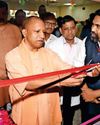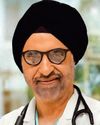Denemek ALTIN - Özgür
States versus citizens
THE WEEK India
|October 12, 2025
From Dhaka to Colombo to Kathmandu, youth-led uprisings are not just outbursts of anger, but deliberate responses to unemployment, inequality and systemic exclusion

The wave of people's uprisings across South Asia, overthrowing the regimes in Sri Lanka, Bangladesh and Nepal, transcends simple explanations of economic crises or governance failures. These are not isolated events, but symptoms of deep-seated structural fault lines: chronic youth unemployment, systemic discrimination and a near-total lack of social protection have converged with oligarchic state capture, exposing a fundamental crisis of state-building in South Asia.
What defines these movements is their sense of purpose. Contrary to the persistent labelling of Gen Z as a “post-ideological” or “post-political” generation, they stand at the forefront, like their predecessors, articulating voices for change. Their mobilisation is reinforced by the massive participation of the working class, mired in a deepening cost-of-living crisis.
The cycle of popular uprisings demonstrates the resilience of people against unmet promises. In Nepal, there is a long history of Jana Andolan. The party-less panchayat system was opposed through major mass movement in the 1990s, and the country witnessed an armed rebellion led by the Maoists from 1996 until 2006. Despite becoming a republic, more than 13 governments have changed between 2008 and 2024, inflicting instability on the lives of ordinary people.
The Aragalaya represents a collective struggle for democratic renewal, accountability and a rejection of callous governance in Sri Lanka. The island nation is also haunted by memories of decades-long civil war. In Bangladesh, history is also marked by popular uprisings, notably, the uprising of 1969, leading to the eventual liberation war in 1971. In 1991, a dictatorship was toppled through mass uprising, and in 2024, an oligarchic regime, which bore no resemblance to an elected government, was overthrown.
Bu hikaye THE WEEK India dergisinin October 12, 2025 baskısından alınmıştır.
Binlerce özenle seçilmiş premium hikayeye ve 9.000'den fazla dergi ve gazeteye erişmek için Magzter GOLD'a abone olun.
Zaten abone misiniz? Oturum aç
THE WEEK India'den DAHA FAZLA HİKAYE

THE WEEK India
AI ALONE WON'T HEAL INDIA'S HEALTH CARE
India needs a mission-driven, public-first approach in using AI for health, not a race to mimic the west
4 mins
November 23, 2025

THE WEEK India
A Lifeline of Hope Compassionate Revolution ft. Sushena Health Foundation
In a world often focused on metrics and outcomes, a quiet but profound revolution based on compassion and equitable access is being envisioned.
2 mins
November 23, 2025

THE WEEK India
Precision is the New Default Why Robotic Surgery Has Become the Mainstream
In a world where our phones unlock with a glance and our cars can drive themselves, it would be unfair if the operation theatre remained trapped in yesterday's technology. Surgery today is about purposeful precision with every movement measured, every outcome intentional. The evolution of robotic surgery represents this very shift — from ‘good enough’ outcomes to outcomes that are consistently excellent and predictable.
1 mins
November 23, 2025

THE WEEK India
New kids on the stage
For these next-gen actors, theatre holds as much appeal as stardom in cinema
5 mins
November 23, 2025

THE WEEK India
Precision Driven IVUS-NIRS Technology is Transforming Cardiac Care
Dr Balbir Singh, Chairman and Head of Cardiology at Max Healthcare, is a recipient of numerous prestigious honours, including the Padma Shri, for his exceptional skills and contributions in interventional cardiology and electrophysiology. Dr Singh has performed thousands of Intra-Vascular Ultrasound (IVUS) driven Angioplasties. IVUS is used in angioplasty to provide doctors with a detailed, real-time, three-dimensional view of the artery's interior, which helps them to precisely assess blockages, guide stent placement, and confirm the success of the procedure.
3 mins
November 23, 2025

THE WEEK India
White Spot Lesions in Dentistry
White spot lesions (WSLs) are the earliest visible signs of dental caries, appearing as chalky white or opaque areas on tooth surfaces. They indicate early enamel demineralization and can be seen with the naked eye. Early recognition and management are essential to prevent progression into cavities.
1 mins
November 23, 2025
THE WEEK India
The New Age of Spine Surgery
Taking care of your spine begins with small, consistent habits. Maintaining correct posture while sitting or lifting, walking regularly, and strengthening back and core muscles can go a long way in preventing problems. Eating a balanced diet and keeping body weight under control also help reduce stress on the spine.
1 min
November 23, 2025

THE WEEK India
THE RED FLAG IN YOUR URINE: Understanding and Detecting Bladder Cancer
The bladder is an organ which stores urine, which is produced by the kidneys. The bladder is a hollow, viscus organ that holds it for a few hours before it is eliminated. While it can occur at any age, the median age of diagnosis is typically 70 years or older.
1 mins
November 23, 2025

THE WEEK India
INTERNATIONAL QUALITY HEALTHCARE MADE AFFORDABLE IN VELLORE
Naruvi Hospitals, creating new benchmarks in affordable world class health care, spreading its ‘Fragrance of Care’ in Vellore, and beyond.
4 mins
November 23, 2025

THE WEEK India
Richardsons Face Hospital
India's first face hospital
1 mins
November 23, 2025
Listen
Translate
Change font size
